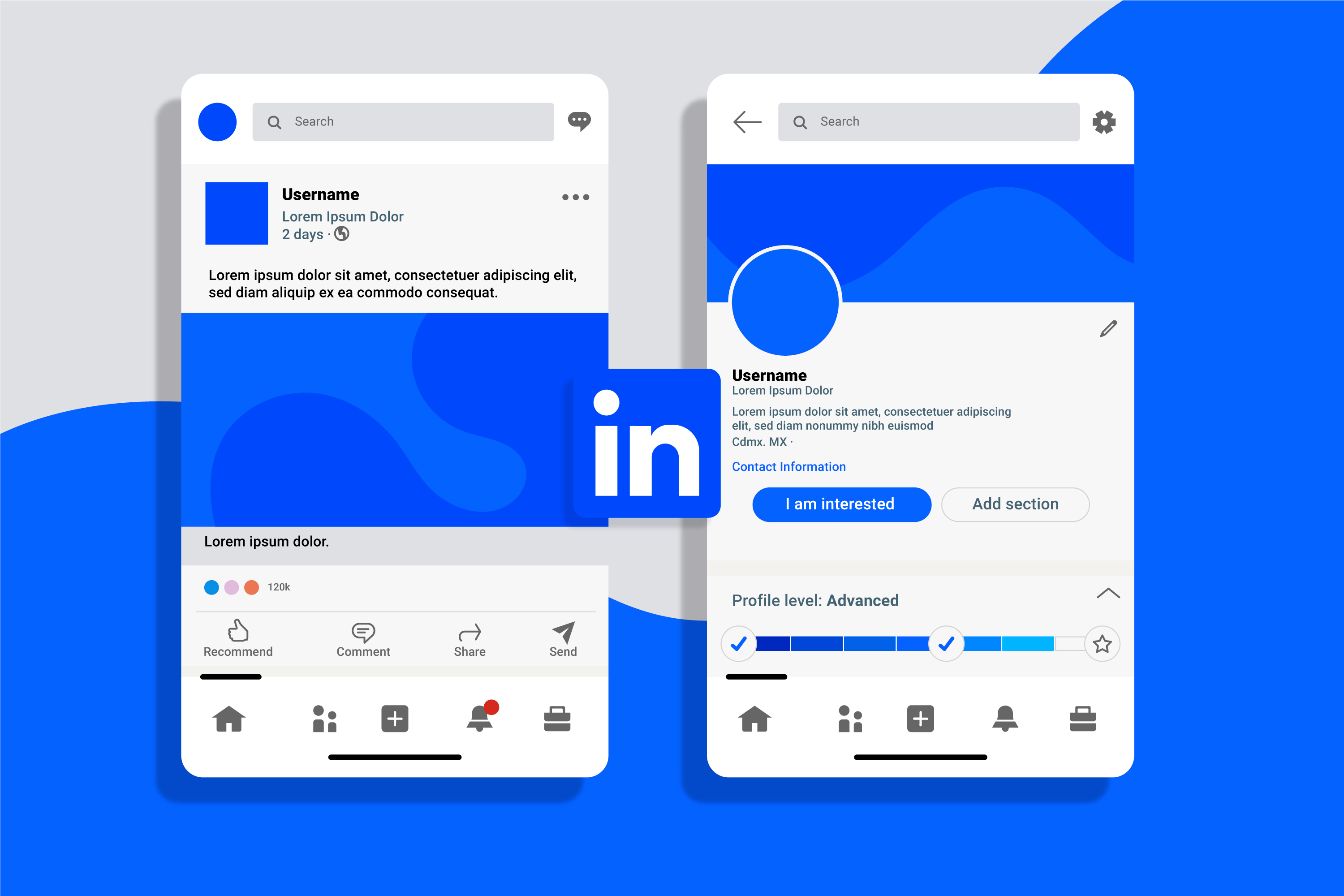In today’s interconnected world, networking is not just a nice-to-have but a vital tool for survival and growth in the art world. The LinkedIn Creative Industry Report indicates that 85% of all jobs are filled by word of mouth within networked relationships. Therefore, artists must master the art of networking to build meaningful connections while navigating the ever-evolving digital landscape.
The Modern Networking Landscape
Networking in the digital age has transformed how artists connect with clients, collaborators, and fans. While traditional avenues like gallery openings, art fairs, and word-of-mouth remain valuable, digital platforms have significantly expanded reach, providing new opportunities to network as an artist and build relationships on a global scale.

Social media platforms, particularly Instagram, are powerful tools to showcase your work, engage with your audience, and build meaningful connections. Studies show that artists who maintain an active online presence are three times more likely to receive direct inquiries about their work. Sharing consistently and interacting with your community, allows you to network as an artist and attract commissions, collaborations, and partnerships.
The shift to online networking boosts your visibility and creates direct, meaningful engagement, making it an essential component of your artistic practice. From digital portfolios to online exhibitions, you now have unprecedented tools to amplify your reach and grow your career, enabling you to network as an artist globally.
Beyond social media, virtual art communities are vital in helping artists connect, share, and refine their work. Platforms like DeviantArt, with over 65 million registered members, provide spaces where artists can engage in creative exchanges, receive constructive feedback, and build relationships with other professionals. This sense of community is invaluable in an industry where collaboration and continuous learning are key.
Additionally, the rise of digital art fairs and online exhibitions has opened new doors for artists to showcase their work globally. Virtual events are seeing a surge in participation, allowing artists to reach a wider audience and connect directly with potential collectors and art buyers. These platforms break the constraints of physical locations, providing enhanced opportunities that help you network as an artist, build relationships, and expand your reach in ways that were previously limited.
Modern technology offers numerous tools to enhance networking efforts. Leveraging digital tools to expand your reach and boost engagement makes networking effectively as an artist more manageable and impactful.
Essential Strategies to Network as an Artist
1. Leverage Online Communities
Tip: Actively participate in online platforms where other creatives gather, such as social media groups, art forums, and virtual communities like DeviantArt or Behance.
- How to do it:
- Regularly comment on others’ posts and offer meaningful, constructive feedback.
- Engage with fellow artists by sharing resources, tips, and industry news.
- Join discussions and create posts that spark conversation and encourage interaction.
- Reach out to artists or professionals whose work you admire with thoughtful messages, expressing your appreciation and interest in their journey.
- Connect directly with potential clients or collaborators who resonate with your style and vision. By engaging with those who express genuine interest in your art, you can foster valuable relationships that may lead to commissions, collaborations, or other opportunities.

- Advantages:
- Building strong professional relationships through constructive feedback leads to trust and reciprocity. This can result in collaborations, referrals, and new opportunities that may have been missed.
- Engaging in these communities helps you stay connected with trends, learn new techniques, and enhance visibility.
2. Host Workshops or Skill-Sharing Sessions
Tip: Establish yourself as an authority by sharing your expertise with others.
- How to do it:
- Organise live virtual workshops or create tutorial videos on your creative process.
- Offer free or paid online sessions that teach specific skills or techniques related to your art.
- Share these sessions through your website, social media, and art platforms.
- Look for online art fairs, webinars, workshops, or virtual conferences. Platforms like Eventbrite, MeetUp, or Facebook groups dedicated to the art industry often list virtual events that cater to artists.

- Participate in chat discussions, ask questions, and connect with other attendees during virtual events. Don’t just be a passive participant—engage meaningfully with others, share your insights, and offer support.
- Follow up with people you’ve met after attending an event. Send a personalised message through social media or email, mentioning something specific from your conversation. This helps to keep the connection alive and lays the foundation for future collaborations or opportunities.
- Many virtual events have break-out sessions or create dedicated groups for attendees. These smaller groups allow for more focused networking and help you form deeper connections with potential collaborators or industry professionals worldwide.
- Advantages:
- Hosting workshops or sharing knowledge showcases your expertise, attracts followers, and creates valuable networking opportunities.
- These events can connect you with other artists, collectors, and potential collaborators who share your interests.
- Engaging with participants during workshops creates opportunities to connect with like-minded individuals, opening doors to potential collaborations, commissioned work, and an expanded professional circle. By actively participating and sharing insights, artists can lay the groundwork for meaningful relationships that may develop over time.
- Additionally, these interactions help establish your reputation as a thought leader, making you a go-to person in your niche.
3. Attend Art Events and Exhibitions (Digital and Physical)
Tip: Combine online and in-person networking for maximum exposure and relationship-building.
- How to do it:
- Digital Networking: Participate in online art communities, attend virtual art fairs, and engage in live-streamed workshops.
- Physical Networking: Attend gallery openings, art fairs, and artist meetups. Local art exhibitions can also serve as excellent platforms for connecting.
- Actively approach people at these events, exchange contact information, and follow up with personalised messages.

- Advantages:
- Digital networking allows you to tap into global opportunities, gain recognition, and collaborate with international artists.
- Physical events build more profound, authentic relationships that may be hard to establish digitally.
- Americans for the Arts found that attending industry events regularly increases the likelihood of getting commissioned work by 3.5 times.
- Participating in both events increases your chances of building trust and gaining visibility among collectors, gallery owners, and fellow artists.
4. Build a Strong Online Presence
Tip: Develop and maintain a professional online portfolio and presence across multiple platforms.
- How to do it:
- Create a dedicated website with a portfolio that includes your work, a biography, and contact details.
- To showcase your creative journey, regularly update your portfolio with new projects, behind-the-scenes content, and works in progress.
- Engage actively on social media platforms like Instagram, Facebook, and LinkedIn to share your latest work, upcoming shows, and personal stories.

-
- Use tools like Buffer, Hootsuite, or Later to schedule your social media posts in advance. This ensures consistent posting and helps you stay on top of mind with your audience without constantly being online.
- Scheduling tools often provide insights into when your audience is most active. By posting at these optimal times, you increase your chances of engagement and make it easier to connect with potential clients and collaborators.
- Keep your portfolio up-to-date with high-quality images and detailed project descriptions to attract potential clients’ attention.
- Advantages:
- A professional website is a dynamic platform to showcase your portfolio, share your story, and establish your brand. It simplifies the process for potential clients, collaborators, and collectors to explore your work, contact you directly, and stay updated on your latest projects. Centralising your online presence boosts visibility, builds trust, and fosters meaningful connections.
- Regularly updating your online portfolio boosts engagement and sparks conversations within your professional network, opening doors to meaningful opportunities.
- A strong online presence demonstrates your commitment as an artist and facilitates establishing long-term relationships that grow through ongoing networking efforts.
For more tips on expanding your online reach, check out our blog, The Artist’s Guide to Social Media.
By following these strategies, artists can enhance their networking efforts and build deeper relationships, which can lead to career growth and creative opportunities.
5. Develop a Personal Brand for Effective Networking
Tip: Build a personal brand that reflects your unique artistic identity and resonates with your audience.
How to do it:
- Share your creative process by posting behind-the-scenes content, sketches, and updates on your artistic journey.
- Maintain a consistent visual identity across your work and online presence to enhance recognition and memorability.
- Engage authentically with your audience by showcasing your personality, values, and the story behind your art.
- Ensure your digital portfolio is searchable by using relevant keywords in your bio, project descriptions, and tags. This will increase your chances of being discovered by people actively looking for an artist with your skills and style.

Advantages:
- A strong personal brand helps you stand out in the competitive art world, making it easier for industry professionals and fellow artists to connect with you.
- Sharing your creative journey and engaging in genuine conversations fosters trust and encourages meaningful interactions, leading to more networking opportunities.
- A cohesive visual identity ensures you’re memorable, which is crucial for attracting potential collaborators, clients, and art collectors.
For more insights on building a strong personal brand, check out our blog, 10 Branding Tips for Artists.
By building a personal brand, artists can take a more targeted and practical approach to networking, which can lead to long-lasting connections and new opportunities.
6. Utilise Professional Platforms
Tip: Use professional platforms like LinkedIn and specialised art communities to showcase your work, connect with industry professionals, and increase visibility. For instance, sharing your latest project on LinkedIn can attract potential clients, while participating in Behance challenges can help you gain recognition within the creative community.

How to do it:
- Create and optimise your LinkedIn profile to highlight your artistic accomplishments, exhibitions, and collaborations.
- Join dedicated art communities like ArtStation to showcase your work and interact with other artists and professionals.
- Regularly contribute to relevant discussions, share insights, and actively connect with gallery owners, curators, and industry leaders.
- Scheduling tools also help you stay organised by letting you plan a content calendar. This way, you can align your posts with upcoming events, exhibitions, or new work releases, ensuring you’re always prepared to share relevant updates.
Advantages:
- Professional networks expand your reach by connecting you with a broader audience, including potential buyers, collaborators, and influencers within the art world.
- Consistent engagement in these networks enhances your credibility by showcasing your expertise and reinforcing your commitment to your craft.
- These platforms offer access to exclusive opportunities, such as job listings, exhibition calls, and collaboration offers, facilitating career growth and networking with decision-makers.
Artists with active profiles on platforms like Behance and ArtStation are more visible to art directors and potential clients. This visibility increases the likelihood of direct interactions, opening doors for networking opportunities, collaborations, and new projects.
By consistently following up with contacts and actively engaging in industry discussions, you can build stronger relationships that lead to more referrals, recommendations, and potential opportunities. These actions make you visible and present in the community, fostering trust and opening doors for you to network as an artist.
By attending virtual studio tours, talks, and networking events, you can significantly expand your network as an artist, connect with professionals worldwide, and build long-term relationships. These activities boost your visibility, make you more approachable, and open doors for collaboration—key elements in today’s interconnected art world.
Measuring Networking Success
To ensure you’re networking effectively as an artist, tracking your progress and adjusting your strategy regularly is essential. Here’s how to implement both practices:
1. Track Your Progress
To effectively network and gauge your success, tracking your efforts and measuring how well your strategies work is essential. Here’s how to do it:
- Set Clear Networking Goals: Define your goals for your networking efforts. Are you trying to gain followers, secure collaborations, or connect with gallery owners? Setting specific goals will help you stay focused and know exactly what to measure.

- Use Analytics Tools: Platforms like Instagram, LinkedIn, and Facebook offer insights into engagement rates, follower growth, and post reach. By regularly reviewing these analytics, artists can identify which types of content generate the most interaction, allowing them to tailor their networking efforts. Understanding what resonates with their audience helps artists refine their approach to building connections, ensuring they focus on meaningful interactions that could lead to valuable collaborations, opportunities, and a stronger professional network.
- Track Networking Contacts: Keep a spreadsheet or use a CRM tool (like Airtable or HubSpot) to track the artists, professionals, or clients you’ve connected with. Note how and when you interacted with them and any follow-up actions. This will help you stay organised and follow through on your connections.
- Review Your Success Regularly: Dedicate monthly or quarterly time to assess your networking progress. This will help you understand which tactics have worked and which haven’t, allowing you to refine your approach moving forward.
By tracking your progress, you understand what networking strategies are paying off and which areas need more focus.
2. Adjust Your Strategy
Networking is an evolving process. The art world—and how professionals connect—changes frequently, so adjusting your networking strategy as needed is crucial. Here’s how to improve your networking efforts:
- Solicit Feedback: Ask for feedback from people in your network. Whether it’s about your social media content, how you engage with others, or how your professional interactions come across, honest feedback can provide valuable insights into areas of improvement.
- Stay Flexible and Experiment. Don’t be afraid to try new methods of networking. Try different types of posts, other times to post, or new virtual networking events. You’ll discover what works best for you and your audience by experimenting.
- Adapt to Industry Changes: The digital landscape and the art industry are constantly changing. Keep up with new platforms, trends, or tools that could help you expand your reach. Attend webinars or follow industry leaders to stay informed about the latest networking techniques.
- Refine Your Pitch and Approach: Networking isn’t just about connecting—it’s also about how you present yourself. Adjust your elevator pitch, how you approach people in online spaces, and how you engage with potential collaborators. Ensure that your brand messaging and visual identity remain consistent across all channels.
Consistently refining and adjusting your strategy ensures continued growth and relevance in the fast-moving art world. By tracking your progress, you can optimise your efforts to network as an artist, build meaningful connections, and expand your reach, bringing you closer to achieving your professional goals.
Conclusion
Learning to network as an artist requires patience, strategy, and authenticity. By combining traditional networking modes with modern digital tools, you can connect meaningfully with your audience and support your creative career. As you refine your strategy. prioritise adding value to others while staying authentic to your artistic vision.
Additional Resources for Artists Looking to Network
- Americans for the Arts offers artists a wide range of resources and guidelines for expanding their professional networks through traditional and digital means.
- Creative Capital provides training programmes and networking opportunities to help artists build sustainable careers in the creative industry.
- The Art Career Project maintains an up-to-date database of networking events, opportunities, and resources to help visual artists expand their professional reach.
- Working Artist Magazine periodically publishes in-depth articles and case studies on successful networking strategies that have helped artists advance their careers significantly.
These resources can guide you further as you network as an artist and build your creative career. Remember that networking is an ongoing process, and the relationships you make today can lead to opportunities for years to come.

